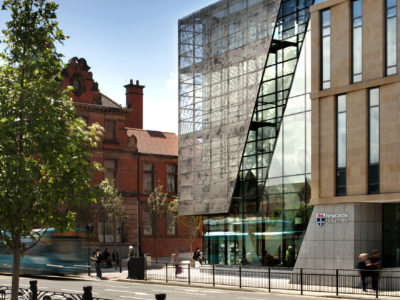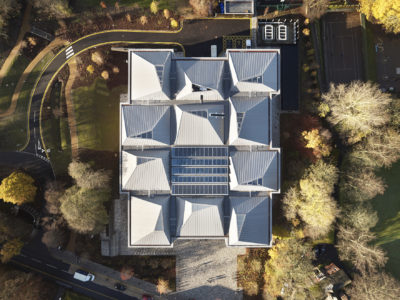Teaching and learning
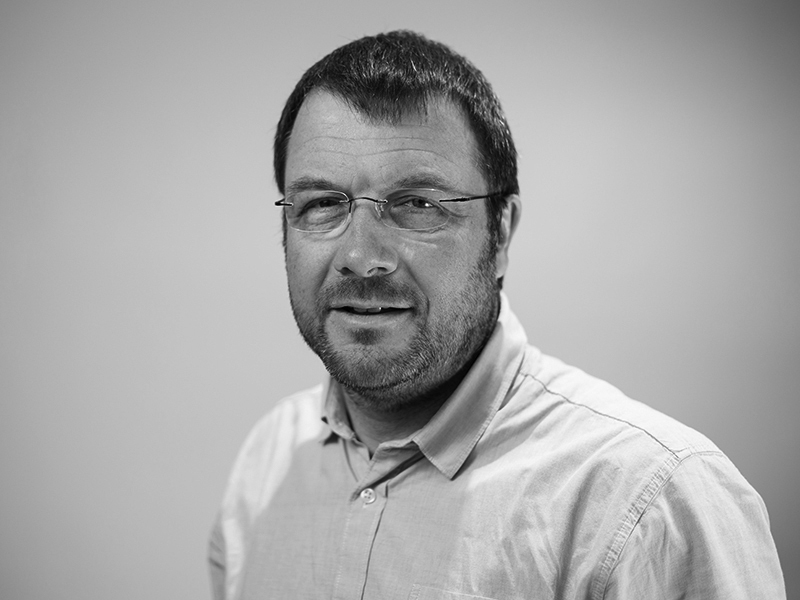
Andrew Kane
Partner,
Architect
Andrew leads our work in the higher education sector, from strategic consultancy, estate planning and masterplanning through to project delivery. He has amassed more than 20 years of experience in the sector and maintains a strong research focus to his work, developing design thinking in fields including novel pedagogies and student wellbeing.
Andrew’s significant experience informs several advisory roles and his involvement with the Higher Education Design Quality Forum and Constructing Excellence.
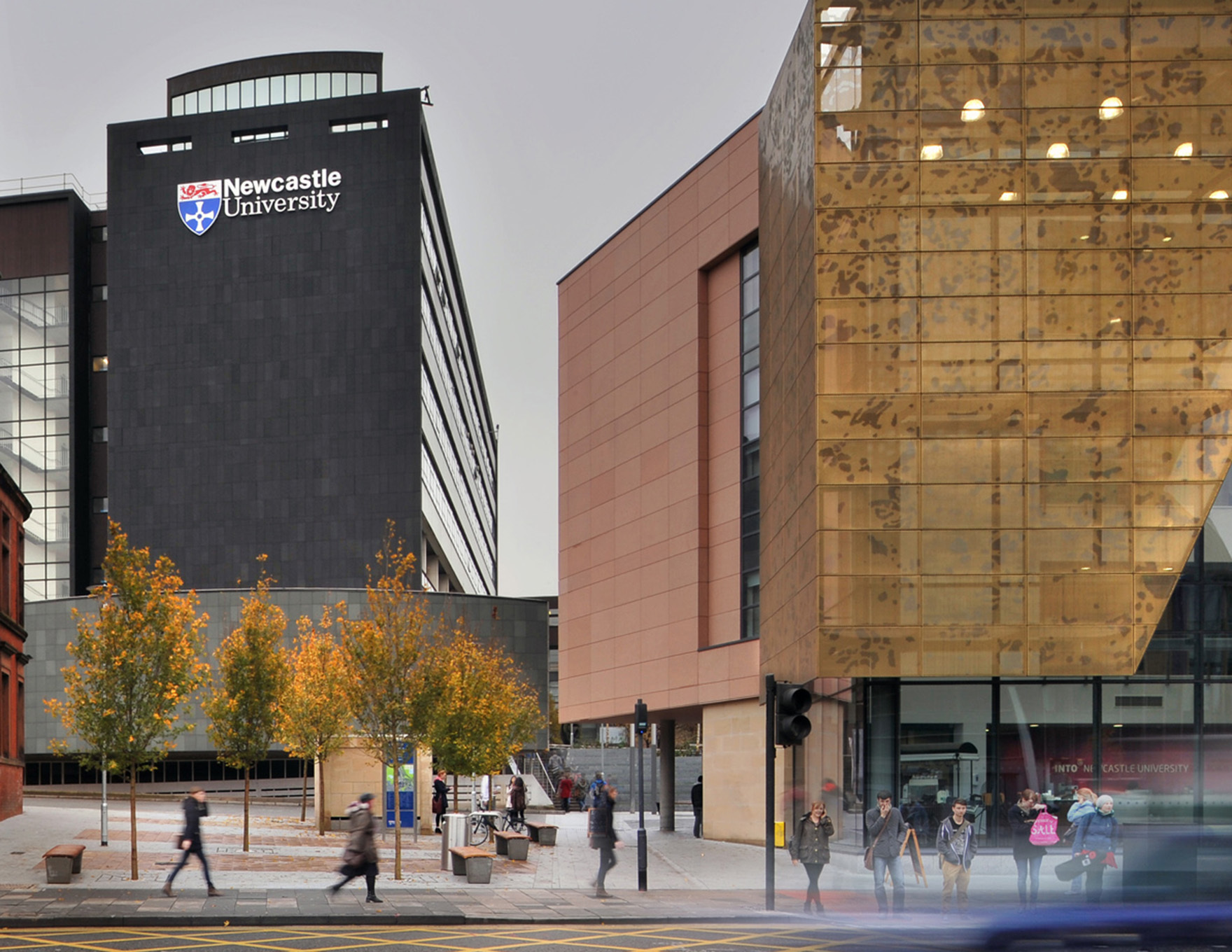
We collaborate with leading higher education institutions to enhance the student experience through research-driven innovation in teaching and learning facilities.
The landscape upon which universities in the UK operate is constantly changing, presenting a range of challenges to our clients. At the same time, teaching pedagogies continue to develop and adapt as our understanding of the interactions between teachers, students, and their learning environments advance.
For many years we have worked closely with our higher education partners to understand their challenges and aspirations, in order to create teaching and learning facilities that meet the current and future needs of their staff and students.
Working closely with Newcastle University for example, we created a state-of-the-art lecture theatre which was suited to the direct instruction method of teaching to over four hundred medical school students. The David Shaw Lecture Theatre features a parabolic seating profile providing each student with an optimum sightline, a large format back projection screen, and perimeter glazing providing natural light to the space. An innovative perimeter corridor arrangement also provides rear access to prevent lectures being disturbed.
Shortly afterwards we collaborated with Lancaster University to provide a suite of lecture theatres for the university’s UK top ten ranked management school.
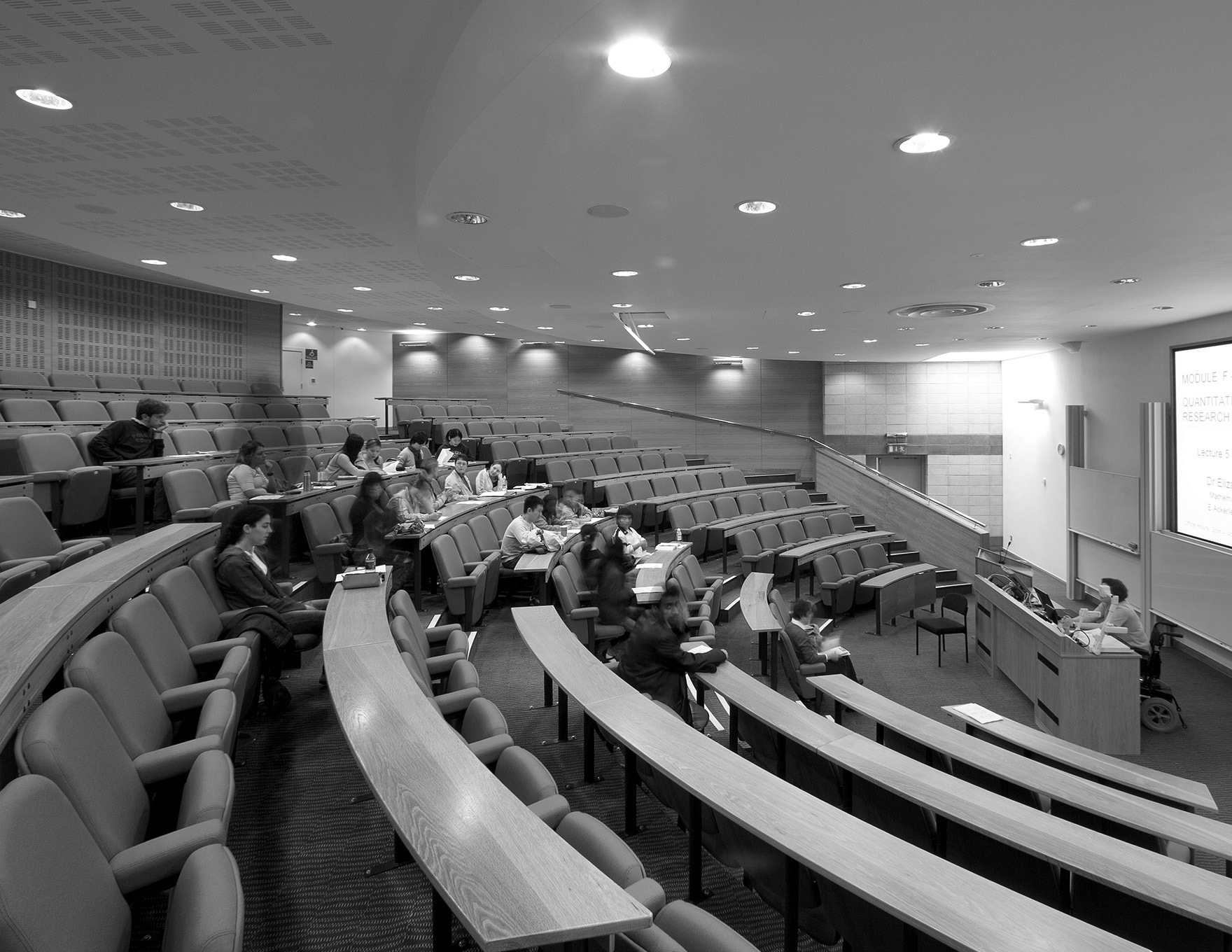
This presented the opportunity to develop an approach centred on the Harvard Business School Case Method of collaborative teaching and learning. Lecture theatres with a horseshoe plan format were created to allow a group of seventy to eighty students, facilitated by a lecturer, to engage in group learning. Research undertaken in the development of these spaces would go on to inform further evolution of this concept in the following years.
At some of the world’s leading business schools, where universities were looking for ways to add value in a competitive, high fee environment, pioneering new teaching methods were being shown to deliver measurable benefits in learning outcomes and student experience.
Extensive research in North America and continental Europe led us to characterise three teaching space typologies based on the level of peer-to-peer collaboration: ‘delivery’ style environments (such as the traditional direct instruction lecture theatre); ‘macro collaboration’ spaces for whole group engagements; and ‘micro collaboration’ spaces such as the Massachusetts Institute of Technology’s ‘technology-enabled active learning’ (TEAL) rooms, where embedded technology facilitates small group working with active learning processes.
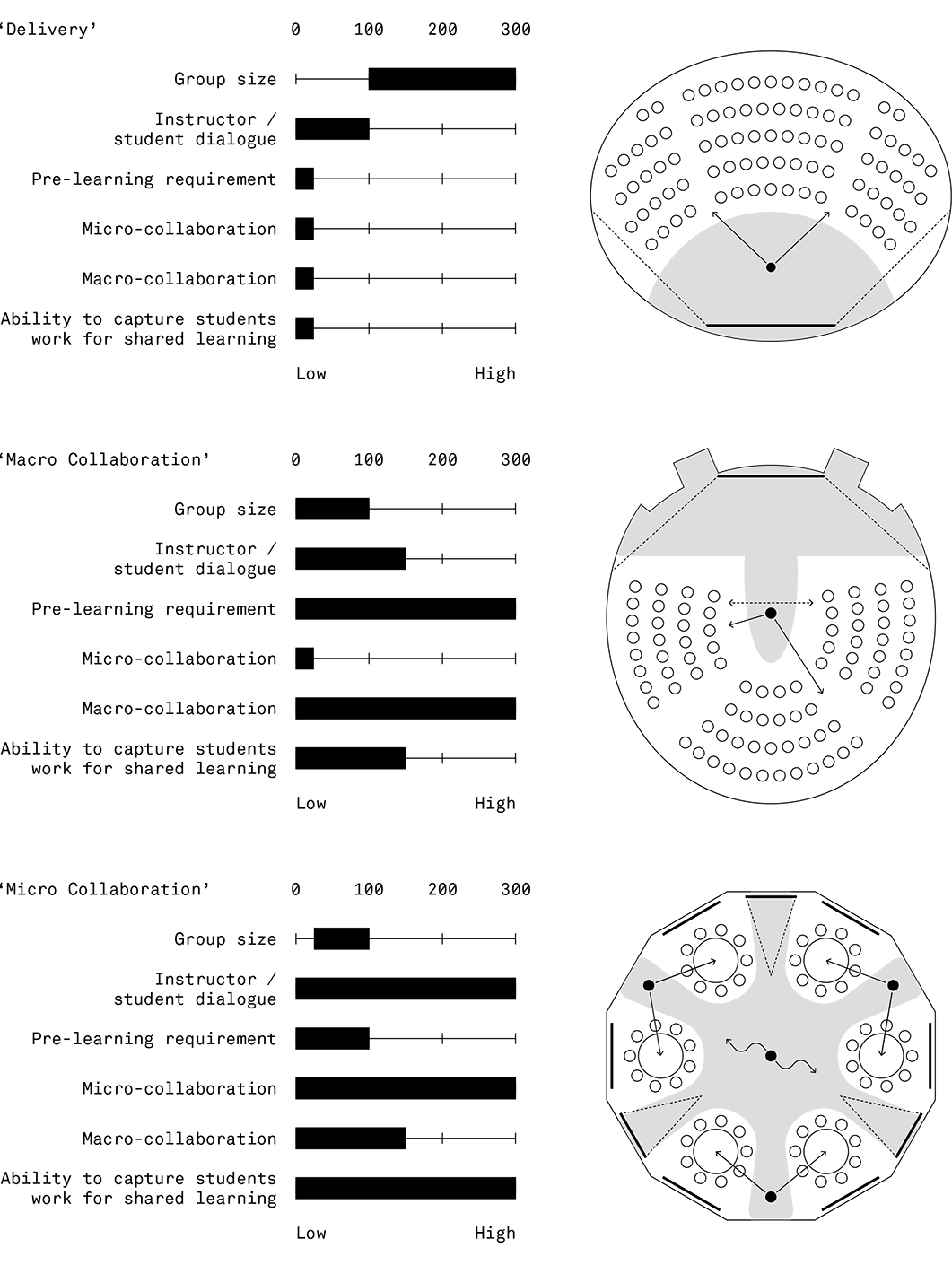
To disseminate these findings to the higher education sector we hosted a forum event chaired by Judy Friedberg, Universities Editor at the Guardian.
Our lecture space created for INTO Newcastle University developed this concept of the collaborative lecture theatre further, to provide a more flexible, universal teaching space that is capable of supporting all three modes of teaching. A lecturer is able to give ‘delivery style’ sessions to groups of 120 students when appropriate, helping to maximise group sizes. The room acoustics and horseshoe layout also facilitates ‘macro collaboration’ - interactive group working for eighty students. Alternatively, if active learning methods are adopted then groups of five students can ‘micro collaborate’ around small tables.
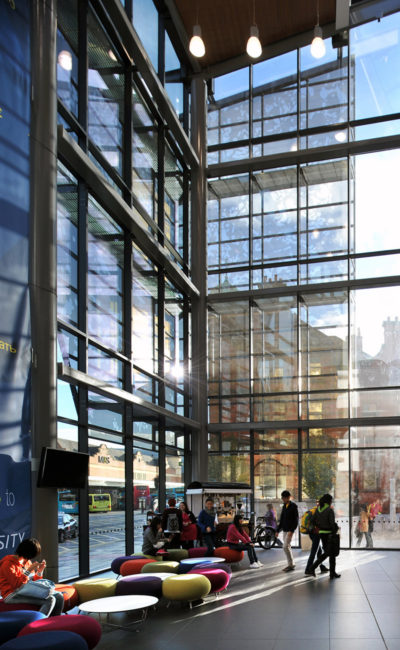

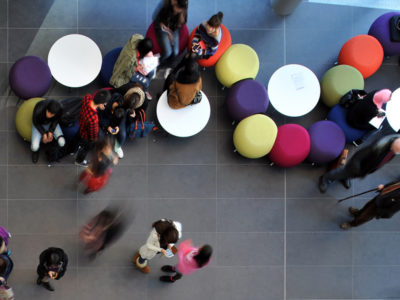
In recent years, with increasing competition and the introduction of the Teaching Excellence Framework, the quality of higher education teaching and learning is firmly in the spotlight.
Our collaboration with Durham University on the Lower Mountjoy Centre for Teaching and Learning builds on the knowledge we have developed over many years of research and development. It provides a diverse range of teaching and learning environments to support both traditional and innovative pedagogies. Lecture theatres for groups of 250 or 500 enables ‘delivery style’ teaching, TEAL rooms and project rooms support ‘micro collaboration’ in small groups, together with extensive open learning spaces. The centre is a key part of the university’s strategy to place itself firmly in the top eight of the Russell Group on three axes – education, research and engagement, and the wider student experience.
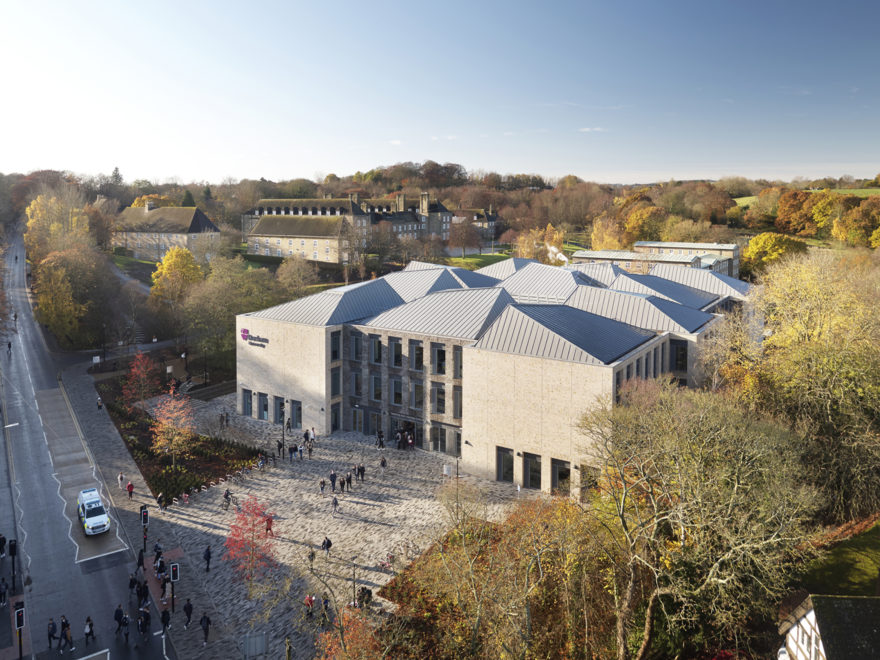
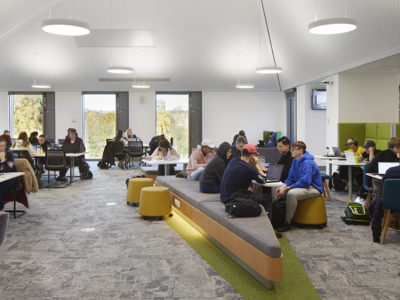

As we look to the future of university education, we understand that the design of academic facilities needs to continue to adapt and evolve to ensure our higher education partners can demonstrate value to prospective students. This includes new higher education models such as the ‘Life Shaped Learning’ concept which is being pioneered at the Coventry University Scarborough Campus. The university college provides accelerated courses with extended teaching periods, multiple entry points through the year and a 42-week academic calendar. These modular courses are adaptable to students’ lifestyle constraints and are offered at reduced fees. At the new campus specialist laboratories, seminar rooms and open learning spaces have been designed to accommodate over 1,100 students, a central atrium providing a vibrant and flexible core to the building.
By collaborating closely with our clients—as in cases such as these—we are able to provide flexible facilities that allow them to deliver an exceptional quality of teaching and learning experience, now and in the future.
